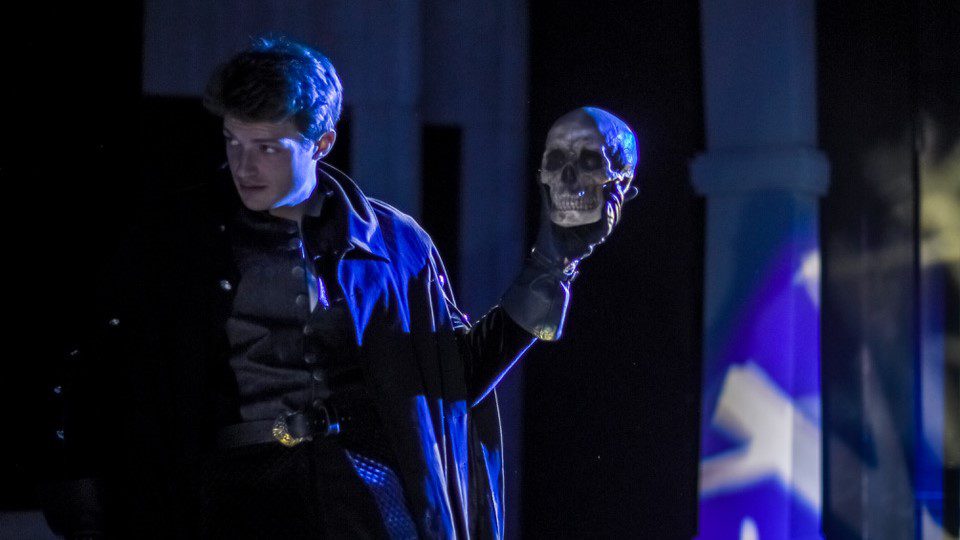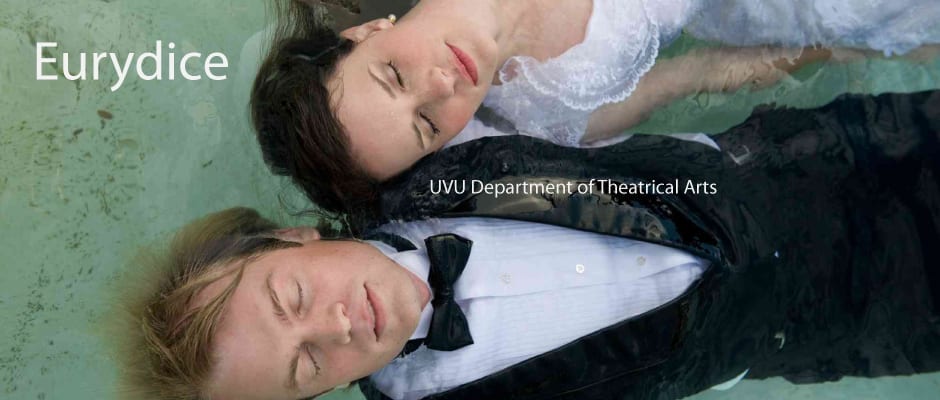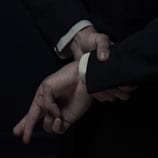SOUTH SALT LAKE — I do not know how many times I have seen Hamlet. But I do know that the production at the Parker Theatre is the best Hamlet I have seen in northern Utah in 15 years. Audiences should make every effort to see this production’s great performances, stellar direction, and beautiful visuals.

Show closes September 10, 2022.
Shakespeare‘s most renown tragedy gets a traditional staging at the Parker Theatre. Hamlet is clad in black. Claudius wears a crown. There are swordfights throughout the play. But “traditional” does not mean “stodgy.” This is a dynamic, elegant staging that had me riveted in every scene. Director Brinton M. Wilkins makes Hamlet a human tragedy by emphasizing the personal costs that the characters experience. Wilkins does this in two ways. First, he stages scenes that are implied in the script or that the characters talk about. For example, the play opens with a few brief interpolated scenes, including a funeral for Hamlet’s father and Hamlet proposing to Ophelia. Seeing life at Elsinore castle before the events of the script unfold makes the eventual tragedy more profound because the audience can see what has been lost. Wilkins’s other strategy was to have a leisurely pace in the moments where characters react bitterly to the traumatic events they experience. Wilkins trusts his actors and lets them show some of the most profound emotions possible for as long as is needed for the scene to make an impact. I especially found Gertrude’s (played by Natalie Killpack-Daniel) sobbing after Hamlet murders Polonius in her bedroom, or Laertes (played by Charlie Flint) raging at the news that his sister has drowned to be some of the most moving moments of the evening. Despite slowing down for these scenes, the play’s two hours fly by.

Spencer Hohl as Hamlet.
Spencer Hohl plays Hamlet, reprising the role he played for the company in 2015. While I praised him at the time, Hohl’s performance has matured into an engrossing portrayal of a tortured soul. Shakespeare’s dialogue flows smoothly from Hohl’s mouth, and the character’s famous soliloquies feel like a vocalized stream of consciousness. Hohl also has an unparalleled grasp on Hamlet’s facets: at various times in the play, Hamlet is witty, energetic, cruel, insane, passionate, detached, and more. Hohl plays all these sides of Hamlet charismatically and without overstepping “the modesty of nature.” Hamlet is a nuanced character, and Hohl portrays that complexity flawlessly in all his scenes.
Matching Hohl in dramatic depth is Lauren Pope as Ophelia. Pope and Hohl have superb romantic chemistry, and each brings out a better performance from the other. Pope is best, though in Ophelia’s madness scene, portraying “the poison of deep grief,” with a tender mournfulness that resulted in the play’s most moving scene. As Claudius, Ben Henderson is masterful. From his character’s befuddlement at Hamlet’s madness to Claudius’s fiery reactions, to his vulnerability in prayer, Henderson provides a successful performance of the full range of Claudius’s scenes. Henderson makes Claudius a worthy foe to Hamlet, and I savored his moments on stage.

Lauren Pope as Ophelia.
I also adored the relationships among the main characters in this play. Polonius (played by Wilkins), Laertes, and Ophelia felt like a real family as Polonius gave some paternal advice before sending Laertes off to study in Wittenberg. Claudius has a friendly easiness with Polonius, and the two act as ready allies in maneuvering through the court intrigue. Rosencrantz (played by Josh Egbert) and Guildenstern (played by Isabella Giordano) are chummy with one another. These relationships among characters make the castle teem with life and give depth to the scenes because the characters’ lives seem to extend far beyond what the audience sees on stage.
Indeed, this is a cast that punches far above their weight. Every actor contributes a fully committed performance, and their combined talents make this production live up to Hamlet‘s colossal reputation. Thanks to this cast (and, undoubtedly, the director), there simply are no weak scenes in this Hamlet.

Left to right: Ben Henderson as Claudius and Charlie Flint as Laertes.
Given her success with the medieval costumes for Sword and the Stone at the Parker Theatre, it was a wise move to have Paige Burton as the costume designer for Hamlet. Burton’s costumes are gorgeous and have a unified aesthetic. Men are all dressed in black pants, with an array of doublets, tunics, and cloaks to distinguish them. Women wore long Renaissance-era dresses. Combined, the costumes showed the Danish court as a place of refinement and sophistication.
But the details are where the costumes really impressed. The matching brocade tunic for Claudius and dress for Gertrude symbolized the new unity they had in their marriage. The ruffles around the necks of Rosencrantz and Guildenstern were a small delight. And the layers to Hamlet’s costume: a tunic, doublet, cloak, and gloves gave variety to the main character’s appearance as he added or removed pieces, even though he was dressed all in black and white. Burton’s costumes alone are worth the price of admission.

Left to right: Isabella Giordano as Guildenstern, Spencer Hohl as Hamlet, and Josh Egbert as Rosencrantz.
James Parker designed the set and lighting design for Hamlet, and they were integral to the appeal of this production. Parker’s set was mostly painted in pale shades that could absorb the rich colors of his lighting design and accentuate the actors’ figures. The set’s most noticeable component was a large staircase that ascended towards stage right, and its landing midway up the stairs providing a great playing space at stage center for swordfights, soliloquys, and more. Parker’s set and lighting combined with Burton’s sumptuous costumes and Wilkins’s directing to produce many stunning stage pictures throughout the play.
As this rave review shows, I loved this production. The Parker Theatre has surpassed all my expectations with Hamlet. There are Equity theatre companies in this country that would give anything to have a production as good as the Parker Theatre’s Hamlet. I strongly recommend that theatre lovers see Hamlet because it may be another 15 years before such a great production is seen again in northern Utah.

These reviews are made possible by a grant from the Salt Lake County Zoo, Arts, and Parks program.




